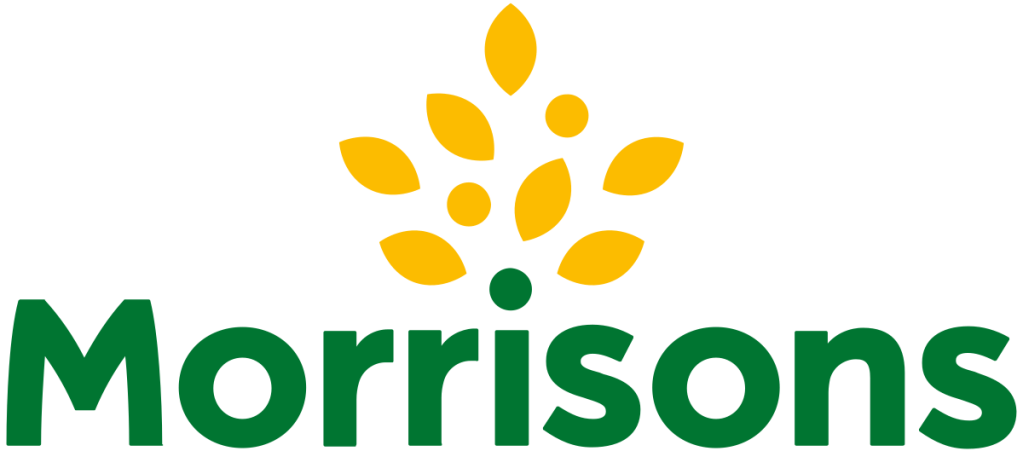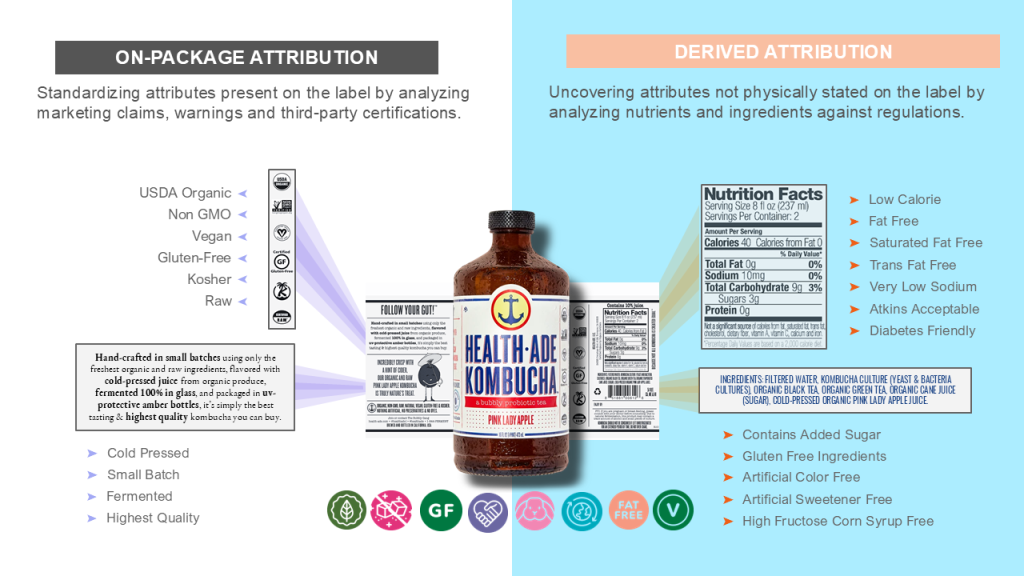
More than half (53%) of global respondents say they’re likely buying more private label products than ever before, and this strong measure of sentiment is a figure backed up by impressive worldwide sales data. In fact, NIQ Retail Measurement Services confirms that private label sales are up 4.3% in annual global sales growth year over year. And, according to research by Technavio, they have speculated continued growth of global private label food and beverages—to the tune of 6.64% CAGR through 2028.
To maximize the opportunities from this growth, retailers must invest in the omnichannel experience, appealing to both shoppers in store and online. NIQ data shows that in the US alone, omnichannel buyers account for 91% of total shoppers, with an 80:20 instore versus online split that is steadily growing (US NIQ Omnishopper, 2023). Furthermore, by 2040 it is predicted that 95% of total global purchases will take place on ecommerce platforms. High quality product content is essential for the future of private label sales online, particularly for categories shoppers are looking to spend more on, like fresh produce and wellness products. Let’s explore what good product content should include.
Shoppers are buying more:
53%
of global shoppers say they’re likely buying more private label products than ever before.
The stigma is fading:
68%
of global consumers say private labels are good alternatives to name brands.
There is demand for more:
60%
of global consumers say they would buy more private label products if a larger variety were available.
Why Content Is Key
As private labels evolve beyond the simple connotations of low-cost alternatives, content has become a crucial differentiator. Today’s shoppers expect private label products to be just as discoverable, informative, and visually engaging as branded products.
Here are the top pieces of product content that private labels should include across ecommerce platforms to optimize their chance of success:
1. Strong Visuals Drive Conversion
In a digital-first shopping world, visuals are the product on the shelf. Whether on retailer websites, mobile apps, or third-party platforms, high-quality product imagery plays a central role in how consumers discover, evaluate, and ultimately purchase private label goods.

According to NielsenIQ and other industry research, consumers are significantly more likely to engage with and buy products that have clear, high-resolution images, especially when shopping for new or unfamiliar brands like private labels. Clean, well-lit product shots give shoppers confidence in product quality and help reduce returns due to unmet expectations. Additionally, as 87% of customers use their mobile devices for online grocery shopping, clear mobile-optimized visuals are key, alongside other helpful lifestyle and scale imagery.
For large, fast-moving private label portfolios, computer-generated imagery (CGI) offers a strategic advantage. CGI allows brands to produce clean, consistent, and on-brand visuals at scale, especially useful for fast-changing packaging, seasonal lines, or product launches where speed to market is critical. It also enables unlimited variations, such as different angles, pack sizes, or promotional overlays, without the need for physical reshoots.
Take a look at our case studies with two leading retailers in the United Kingdom.


Find out more about NIQ Brandbank Image Capture services here.
Take the visual experience further with Rich Media. Shoppers rely on rich media to evaluate products online and in-store apps. Additional marketing and lifestyle imagery, image hotspots and engaging videos complement existing clear front-of-pack photography which helps build trust and reduce hesitation on the digital shelf. 76% of online shoppers prefer product pages with enhanced content, however many retailers are falling short in offering effective enhanced visual content.

2. Enhanced Attribution Boosts Discoverability
Detailed attributes such as dietary claims, allergen information, and usage instructions, fuel search, filter, and recommendation engines on ecommerce platforms. This is essential for private label products aiming to win in fast-growing categories like gluten-free snacks or sustainable household goods.

These detailed attributes are also important across the supply chain, and for 3rd Party syndication for health and wellness apps as well as last-mile delivery services. Keeping one source of product content keeps these attributes up-to-date, consistent with recent shopper trends and bridge the gap across the omnichannel experience.
3. Consistency Builds Loyalty
Private label products will benefit hugely from consistent, brand-aligned content that reflects quality and reliability. A shopper must be met with consistent on-and-offline content that allows for a seamless omnichannel shopping experience.
High quality product imagery completed high quality attribution both on-pack and derived and simple consistencies like product naming conventions help shoppers find your products easily online as they do instore and helps replicate the instore experience. Remember, when shopping online, a shopper can’t pick up and physically examine a product, so providing as much detailed information and multiple images is essential for the online experience.
It helps reinforce that these aren’t just cheaper options, but smart, value-driven choices shoppers can trust.
Spotlight on Fresh: A Prime Opportunity for Private Label
Fresh categories are increasingly becoming the heartbeat of the grocery store. These are not just essential items; they are emotional drivers of basket-building, trip frequency, and brand loyalty. For private labels, this is a massive opportunity.
Recent data shows that fresh remains a key spending priority for consumers, even amid economic uncertainty. In NIQ’s Consumer Outlook: Guide to 2025, shoppers reported intentions to increase spending in fresh categories like produce, meat, and dairy, even while cutting back in other areas like eating out and out-of-home entertainment.

Health and wellness continue to be powerful drivers of fresh food purchases, with consumers prioritizing options that align with their desire for healthier lifestyles. Fresh produce remains a cornerstone of this trend, as shoppers increasingly seek out fruits (+4% YoY), vegetables (+1.2%), and minimally processed foods to support their nutritional goals.
This shift is further propelled by the growing use of GLP-1 medications by consumers. Originally developed to manage diabetes, these medications are increasingly being used for weight loss, with 36% of users seeking its appetite-suppressing benefits.(1) Many of these users are pairing their usage with a healthier diet, helping fresh and organic foods.
Organic and clean-label options are also gaining traction, with consumers willing to pay a premium for products that promise transparency, fewer additives, and sustainable farming practices. This shift highlights an opportunity for brands and retailers to emphasize the health benefits of fresh offerings while incorporating messaging around quality and authenticity.
However, while shoppers are diversifying their spend both on and offline, fresh food and perishables have less progress gaining online sales traction. In fact, though 86% of US CGP dollar sales are represented by ‘omnichannel shoppers’ the total US fruit market which saw more than $50 billion in sales in the past year, only achieved $4.5 billion of those sales online, highlighting a growth opportunity. (2)
By improving online product content for private label fresh products, retailers can enhance the shopper experience, leading to confident purchases and an increase in spend.
Let’s take a look at a retailer who has experienced the benefits of investing in their fresh offering.
Wakefern Fresh Project:
Since working with NIQ Brandbank in 2018, Wakefern has achieved 100% content completeness, improving from a 40% error rate from a lack of quality control in content. Their attention then turned to improving digital product content across the store, starting with a bespoke fresh produce project that accelerated online sales.
To meet growing consumer demand for fresh products and improve digital discoverability, Wakefern partnered with NIQ Brandbank to transform how content is created for its private label perishables.
At the heart of this collaboration is a bespoke onsite shooting program at Wakefern’s Jamesburg facility, specifically designed to streamline the capture of high-quality, stylized content for perishable goods.
This initiative enabled Wakefern to generate lifestyle-rich imagery and consistent, standardized content for all fresh categories, from bakery to meat.


Key Outcomes:
Time & Cost Savings: Centralized, in-house shooting eliminates the need for ad hoc or outsourced photography, reducing both timelines and spend.
Content Standardization
Wakefern achieved a consistent look and feel across fresh products, which is critical for shopper confidence and brand cohesion online.
Expanded Product Assortment Online
By making more perishables content-ready, Wakefern was able to grow its shoppable assortment — particularly important as consumers increasingly shop fresh categories through digital channels.
Enhanced Shopper Experience
High-quality, accurate, and engaging content helps consumers make more confident purchase decisions, especially for categories where visuals influence trust and appeal.
Seamless Product Launches
With real-time updates and standardized workflows, new items are quickly integrated into Wakefern’s ecosystem, reducing time-to-digital-shelf.
Content Can Unlock Even More Value
Fresh products have historically been underrepresented in digital listings. But as more shoppers use apps for in-store guidance and online ordering, having detailed, accurate, and visually appealing content for fresh SKUs is no longer a nice-to-have, it’s a necessity.
Winning with Private Label Starts at the Digital Shelf
Private label is no longer playing catch-up. It’s setting the pace. As retailers invest in innovation and premiumization, particularly in high-growth segments like fresh, pet care, and wellness, the digital shelf has become a critical battleground.
But product innovation alone isn’t enough. To fully realize the potential of private label, brands must back their assortment with best-in-class product content, from compelling imagery and rich attribution to standardized, accurate data that drives discoverability, trust, and conversion.
In today’s increasingly hybrid retail world, where every click, swipe, and search matters, great content isn’t a bonus, it’s essential.
Ready to elevate your private label content?
Get in touch with the NIQ Brandbank team to discover how we can help you deliver high-impact, consistent, and conversion-driven content across every category, including your most complex and high-growth areas like fresh.
With global expertise and proven success partnering with leading retailers, we’re the trusted partner for brands that want to win on the digital shelf.
Let’s create content that converts-together.




